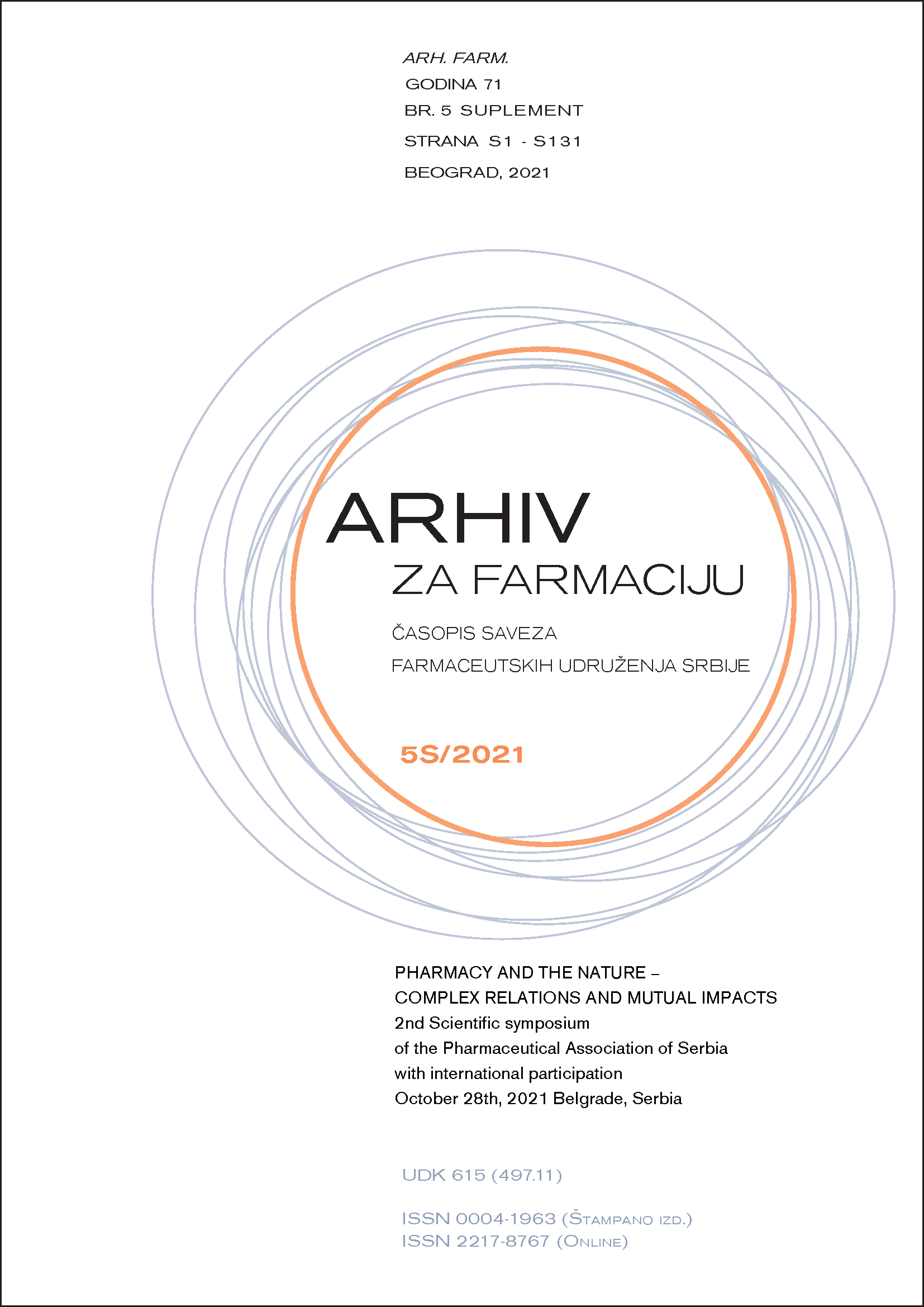SADRŽAJ TEŠKIH METALA I METALOIDA U UZORCIMA SAMONIKLIH PEČURAKA GANODERMA LUCIDUM I GANODERMA APPLANATUM
Sažetak
Vekovima su se pečurke koristile u istočnoazijskim zemljama za poboljšanje zdravlja i dugovečnosti, a zatim se njihova upotreba proširila po celom svetu. Lekovite vrste mogu biti jestive ili nejestive pečurke koje pokazuju terapeutski efekat na zdravlje ljudi. Zbog svog raznolikog sastava, imaju važno mesto u prehrambenoj i farmaceutskoj industriji. Hemijski sastav samoniklih i gajenih vrsta može se razlikovati zbog uslova u kojima rastu. Gajene pečurke ne razvijaju u dovoljnoj meri odbrambene mehanizme, jer im nisu potrebni za opstanak, pa je i sinteza sekundarnih metabolita manja, ali se mogu smatrati sigurnijim za konzumiranje jer rastu u kontrolisanim uslovima. Za razliku od njih, samonikle vrste su bogatije sekundarnim metabolitima ali mogu imati i veći sadržaj toksičnih elemenata. Sadržaj toksičnih elemenata u divljim pečurkama može predstavljati veliki problem za zdravlje ljudi, pa je cilj ove studije određivanje sadržaja potencijalno toksičnih elemenata (PTE) u pečurkama, Ganoderma lucidum i Ganoderma applanatum. To su nejestive, lekovite pečurke koje se zbog svog hemijskog sastava često koriste u medicinske svrhe. Zbog varijacija u kvalitetu pečurke G. lucidum koja se može naći u prirodi, kao i sve većoj potražnji za njom u prehrambenoj, farmaceutskoj, kozmetičkoj i industriji zdravih proizvoda, uzgajanje je postao glavni izvor snabdevanja ovom vrstom (1). Određivanje sadržaja elemenata As, Cd, Hg, Pb, Cu, Fe i Cr urađeno je uz pomoć induktivno spregnute plazme sa optičko-emisionom spektrometrijom (ICP-OES). Koncentracija As, Cd, Hg, Pb, Cu, Fe i Cr u Ganodermi lucidum bila je 0,084±0,001, 1,6±0,1, 0,14±0,02, 2,8±0,1, 8,6±0,5, 64,8±4 i 0,26±0,02 mg/kg suve mase i u Ganoderma applanatum 0,22±0,02, 1,6±0,1, 0,22±0,03, 1,8±0,2, 33,7±2, 8,5±0,5, 0,3±0,03 mg/kg suve mase. U poređenju sa prosečnim vrednostima iz literature, za navedene elemente kod samoniklih vrsta pečuraka, dobijene vrednosti su u dozvoljenim granicama (2). Međutim, kod gajenih vrsta sadržaj navedenih elemenata je manji, osim vrednosti za sadržaj Cu za vrstu L. applanatum i sadržaj Fe za obe vrste (3). Iz ovih razloga je od izuzetne važnosti proučavanje elemntnog sastava kod lekovitih samoniklih vrsta pečuraka.
- Autori zadržavaju autorska prava i pružaju časopisu pravo prvog objavljivanja rada i licenciraju ga "Creative Commons Attribution licencom" koja omogućava drugima da dele rad, uz uslov navođenja autorstva i izvornog objavljivanja u ovom časopisu.
- Autori mogu izraditi zasebne, ugovorne aranžmane za neekskluzivnu distribuciju članka objavljenog u časopisu (npr. postavljanje u institucionalni repozitorijum ili objavljivanje u knjizi), uz navođenje da je članak izvorno objavljen u ovom časopisu.
- Autorima je dozvoljeno i podstiču se da postave objavljeni članak onlajn (npr. u institucionalni repozitorijum ili na svoju internet stranicu) pre ili tokom postupka prijave rukopisa, s obzirom da takav postupak može voditi produktivnoj razmeni ideja i ranijoj i većoj citiranosti objavljenog članka (Vidi Efekti otvorenog pristupa).

